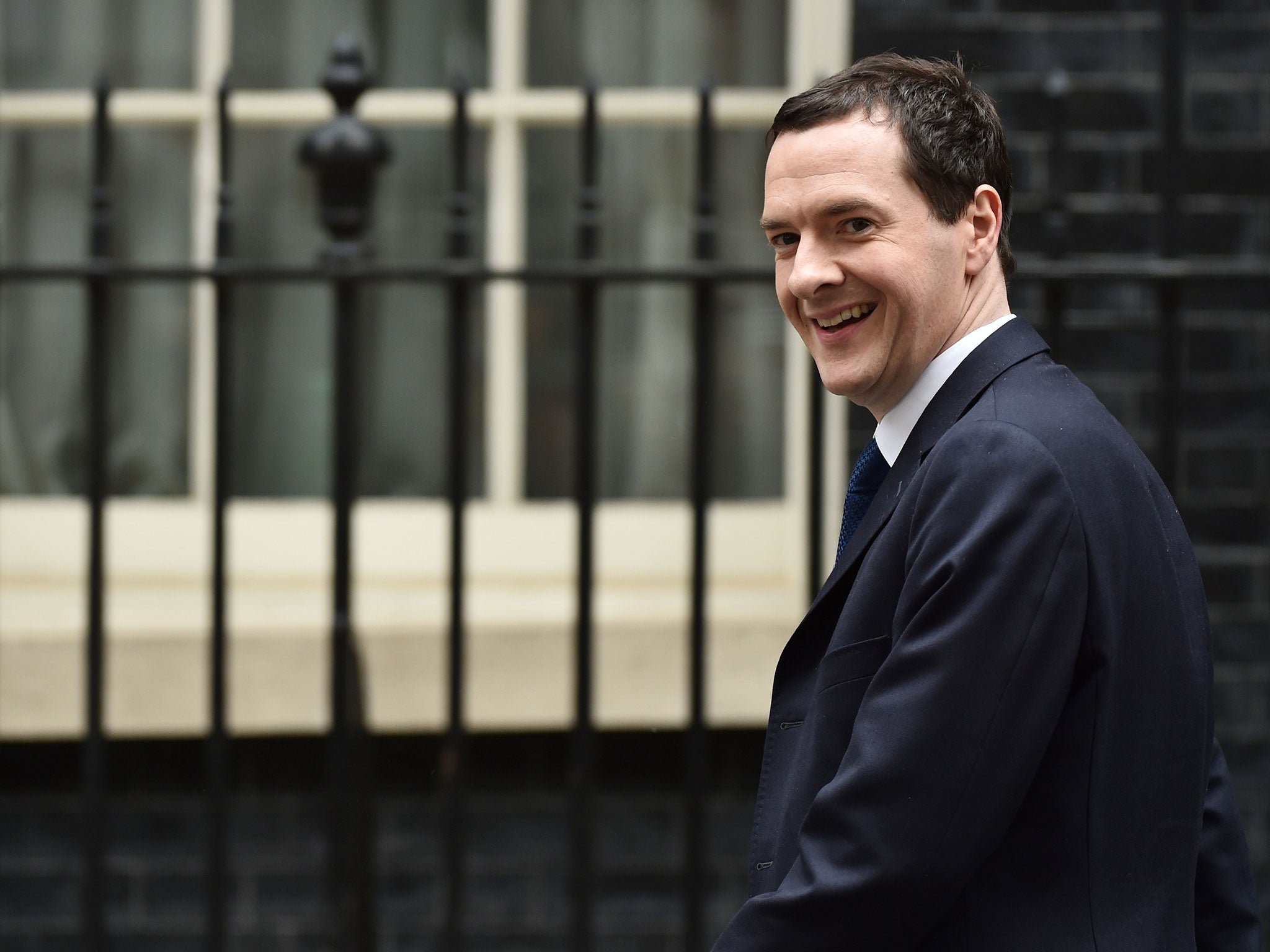Tax windfall puts Osborne on track to beat target by £15bn
Bank fines and spending cuts help trim May’s borrowing to lowest since 2007

Surging tax receipts and a spending clampdown could see the Chancellor, George Osborne, beat his deficit reduction targets by as much as £15bn this year.
Borrowing figures from the Office for National Statistics showed May’s budget deficit falling to £10.1bn – the lowest for the month since 2007 and £2.2bn lower than for May last year.
That leaves borrowing in the first two months of the financial year running more than £5bn below last year. The much stronger jobs market filled the Treasury’s coffers with the best income tax receipts since 2011, up 5.3 per cent on the year to £10.8bn.
Plunging inflation has meanwhile cut the Government’s interest bill on index-linked debt, while departmental spending is just 1.4 per cent higher than last year.
Investec’s chief economist, Philip Shaw, said the figures implied total borrowing of just £59bn for 2015-16 – far below the Office for Budget Responsibility’s £75.3bn forecast – if the current trends continued.
“It is broadly encouraging that at this stage of the year, borrowing still seems to be coming down,” he added.
The figures come weeks before next month’s emergency Budget, at which the Conservatives are expected to enshrine plans to require budget surpluses. But the Chancellor has also to spell out £12bn in so-far unspecified welfare cuts.
Plans in March’s Budget implied savage cuts of more than 5 per cent to public spending in 2016-17 and 2017-18. Mr Shaw said the better borrowing figures could give the Chancellor breathing space to “ease the squeeze” and even out the roller-coaster profile of spending reductions.
He said: “Instead of sticking to the March Budget profile over the next three years, the Chancellor could ‘ease the squeeze’ on expenditure by averaging out the next four years’ figures, bearing in mind that under the current plans, 2019-20 allows for a significant jump in spending. In summary this would enable him to project a profile where departmental expenditure declines by an average of 1.8 per cent per annum, rather than 3.7 per cent.”
Fines for bank scandals also helped trim the deficit, as Barclays’ £284m fine for forex rigging was paid into the public coffers. Alongside Barclays’ penalty, the ONS said the receipt of a £227m Libor-rigging fine from Deutsche Bank also cut borrowing in April by the same amount.
Despite the improvement, the budget deficit still stood at 4.9 per cent of GDP in the year to March – ahead of most major economic rivals. Britain’s overall debt pile, meanwhile, grew to a record £1.5 trillion last month – equivalent more than 80 per cent of the economy.
The Chancellor could also lose Britain’s last remaining triple-A sovereign rating. Standard & Poor’s put the nation on a negative outlook last week due to the potential impact of the Conservatives’ plan to hold a referendum on membership of the European Union by the end of 2017.
Subscribe to Independent Premium to bookmark this article
Want to bookmark your favourite articles and stories to read or reference later? Start your Independent Premium subscription today.

Join our commenting forum
Join thought-provoking conversations, follow other Independent readers and see their replies